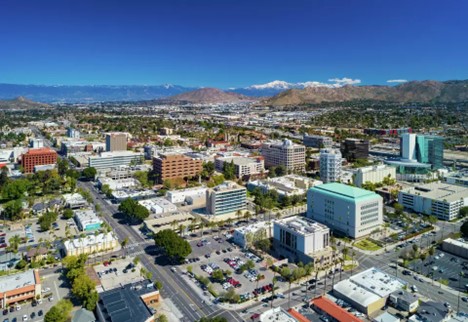Residents are fleeing the coast, but can they escape rising housing costs?
By Ariana Bindman March 4, 2024
https://www.sfgate.com/bayarea/article/california-inland-empire-housing-costs-18696495.php

California’s Inland Empire is the type of place that most people drive through and quickly forget about.
Flanked by fading strip malls and Amazon warehouses, the arid region, which includes San Bernardino and Riverside counties, is an often overlooked part of Southern California that supposedly provides one of the last vestiges of affordable housing in the state. Recent data, however, suggests this may no longer be true.
Homebuyers needed to make at least $151,000 per year — or about $73 an hour — to afford the $555,000 median-priced home in the Riverside metro in August 2023, Redfin data shows. That income requirement has risen 18% year over year, and doesn’t show any signs of slowing.
The region’s housing market shifted dramatically during the pandemic, said Daryl Fairweather, Redfin’s chief economist. The rise of remote work helped usher in a new wave of Los Angeles residents who were already getting priced out of the city, she said, allowing them to buy cheaper homes just an hour away. In Riverside and San Bernardino counties, housing is about $200,000 less expensive than the rest of California, county data shows.
“If you can make a move from Los Angeles to Riverside and still maintain a similar salary, that really opens up a lot more affordable housing options for you,” Fairweather said.
A California dark horse
As talk of a mass California “exodus” dominated the news cycle in recent years, data shows that other regions of California have actually been growing, especially in the Inland Empire.
Riverside and San Bernardino County populations are growing faster than the Southern California average, 2023 county economic forecasts show, and this trend is expected to continue for at least the next four years. New and relatively affordable housing, combined with the growing number of jobs, is ultimately expected to bring in thousands of residents.
As home prices rose in 2020, tens of thousands of new housing units were built over the next three years, establishing Riverside as the second-fastest growing county in the entire state. Meanwhile, Census Bureau data shows that the Los Angeles population shrank by 2% between 2020 and 2022.
But priced-out Los Angeles residents aren’t the only people looking to buy homes in the area.
Investors have spent billions on homes in the city of Riverside since 2020, a sharp increase from years prior, Redfin data shows. Fairweather said that these investors — many of whom operate under LLCs or trusts to conceal their identities — are likely honing in on the region because it’s expected to grow in popularity compared to other parts of the country.
For many, housing is already unaffordable
Wages aren’t keeping up with Riverside County’s rising costs. While the region touts itself as a prominent warehouse and transportation hub, the average person stocking these warehouses makes just $17.50 per hour — well below the threshold needed to buy a house.
“Housing is the need that is hardest to meet in California,” David Brady, a UC Riverside public policy professor, told SFGATE, explaining that many people likely won’t be able to afford to live in the Inland Empire soon.
Just 3.1% of home listings were affordable to the typical Riverside family in 2023, Redfin spokesperson Angela Cherry told SFGATE, and for many renters, the dream of home ownership is drifting even further out of reach. U.S. Census Data shows that from 2018 to 2022, the median household income in Riverside County was $84,000, while individuals earned just $35,000 per year. This means that renters in particular are at risk of displacement, Fairweather said.
Continued migration is expected to transform California’s landscape. More people are continuing to move from expensive coastal areas to more agricultural cities like Bakersfield and Fresno, Fairweather said, while Sacramento is becoming one of the top migration destinations in the whole country. Many of those new residents are coming from San Francisco, she continued, and as a result, they have created a “megaregion,” as SFGATE previously reported.
But overall, experts like Brady are still concerned that families across the state won’t be able to meet their most basic and important need. “There’s nothing rational, reasonable or affordable about any aspect of California housing,” he continued, explaining that there still isn’t enough to go around.
“You saw these problems become completely insane in LA in the past,” he said. “Well, now they’re becoming insane in the IE as well.”
March 4, 2024
Ariana Bindman is the news features reporter at SFGATE. To submit tips, comments or cat videos, please reach out to her at ariana.bindman@sfgate.com.

